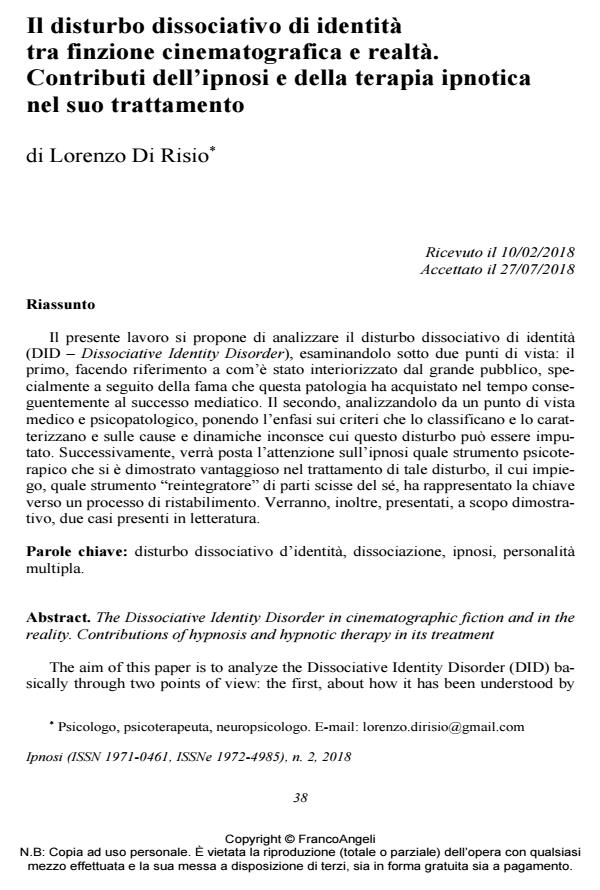The Dissociative Identity Disorder in cinematographic fiction and in the reality. Contributions of hypnosis and hypnotic therapy in its treatment
Journal title IPNOSI
Author/s Lorenzo Di Risio
Publishing Year 2018 Issue 2018/2
Language Italian Pages 17 P. 38-54 File size 246 KB
DOI 10.3280/IPN2018-002003
DOI is like a bar code for intellectual property: to have more infomation
click here
Below, you can see the article first page
If you want to buy this article in PDF format, you can do it, following the instructions to buy download credits

FrancoAngeli is member of Publishers International Linking Association, Inc (PILA), a not-for-profit association which run the CrossRef service enabling links to and from online scholarly content.
The aim of this paper is to analyze the Dissociative Identity Disorder (DID) basically through two points of view: the first, about how it has been understood by the public and the people who do not know this pathology, especially as a result of its media success, like a great deal of movies about it that have been produced. The second, analyzing it from a medical and psychopathological point of view, pointing out on the criteria that classify and characterize it and on the unconscious causes and dynamics to which this disorder can be imputed. Lastly, the focus will be on hypnosis technique as a psychotherapeutic tool that has proved to be beneficial in the treatment of this disorder, whose use as a "reintegrator" tool for splitted parts of personality has meant the key of the reestablishment process. Two cases in the literature will also be presented for demonstration purposes.
Keywords: Dissociative identity disorder, dissociation, hypnosis, multiple personality.
Lorenzo Di Risio, Il disturbo dissociativo di identità tra finzione cinematografica e realtà. Contributi dell’ipnosi e della terapia ipnotica nel suo trattamento in "IPNOSI" 2/2018, pp 38-54, DOI: 10.3280/IPN2018-002003